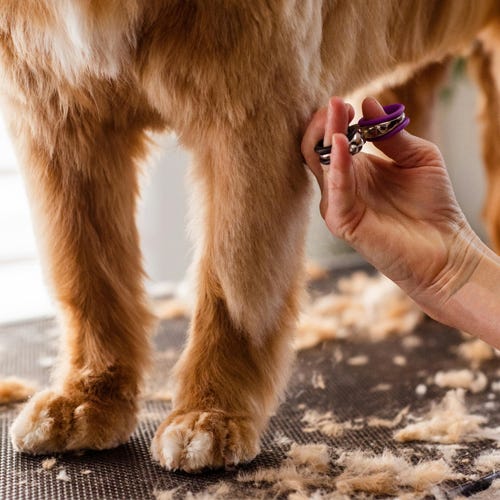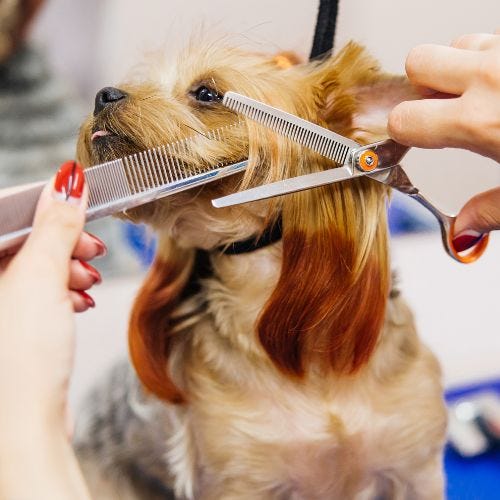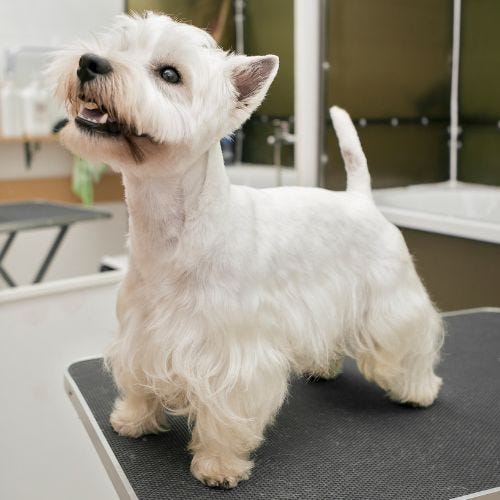As pet groomers, we dance around the delicate issue of anal sacs more than most of us would wish. We hear customers make a wide variety of requests on the topic. “Can you squeeze his butt?” “Will you pop his glands?” “Can you do that anal thing?” It can be hard to keep a straight face while having these conversations, but even more difficult is knowing what to do when met with a request to express anal sacs.
Some groomers routinely check and express the sacs on every dog. This practice has come into question in recent years. “Many veterinarians suggest that this should not be done in a normal dog with no history of problems. Many groomers make it a matter of routine, however, to express the anal glands of the dogs under their care.” (https://shallowfordvet.com/anal-glands-and-recognizing-problems/) Dr. Daniel Dowling (Camden Hospital for Animals, Camden, ME) says, “Groomers should express anal sacs close to never. Once you start doing it, there are often more troubles than if you let it go.”
Normal, healthy anal sacs function by excreting a small amount of fluid each time the dog has a bowel movement. The theory is that the strong-smelling substance serves as a marker, depositing each dog’s individual scented calling card with its feces. Problems can occur when the sacs do not empty properly, and the liquid becomes thickened and cannot exit the ducts. Bacteria can multiply in the retained matter and cause infection, leading to abscesses that may rupture. This can be very painful for the dog. Small breed dogs are more likely to experience problems with anal glands, especially if they are fed a poor-quality diet, are obese, or do not have regular, vigorous exercise. In addition, some dogs will spontaneously evacuate their anal sacs when they are frightened, an experience no one wants to have when holding a pet.
As pet groomers, our concerns are with the exterior of the animal’s body. Anal glands are located internally, and by all accounts, their care should fall into the realm of veterinary practice. That said, groomers across the country have been expressing anal sacs for a long time, mainly with no adverse effects.
So, when a customer requests we “do the butt thing,” what should we do? In light of what modern veterinarians now suggest, I believe it is a practice we should not take lightly. In our studio, we will check sacs upon request and try gentle pressure if the sacs seem full. If more than gentle pressure is required, we refer the customer to their veterinarian for service. Gone are the days when we manually expressed the sacs on every dog. And you know what? I don’t miss it a bit.
By Daryl Conner, MPS, MCG
Daryl Conner has been devoted to making dogs and cats more comfortable and beautiful for almost 40 years. You can find her happily working at FairWinds Grooming Studio with her daughter and infant granddaughter, or typing away at her latest grooming-related article. Daryl was awarded both a Cardinal Crystal Award and Barkleigh Honors Award for journalism. She shares her meadow-hugged antique Maine farmhouse with her practically perfect husband and too many animals.





